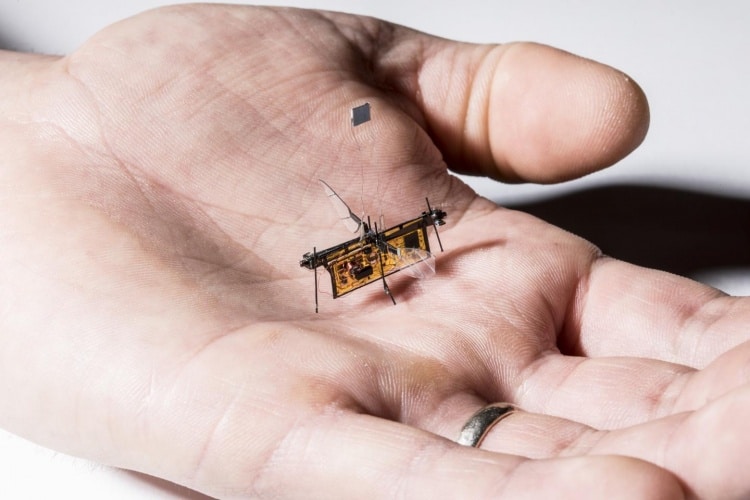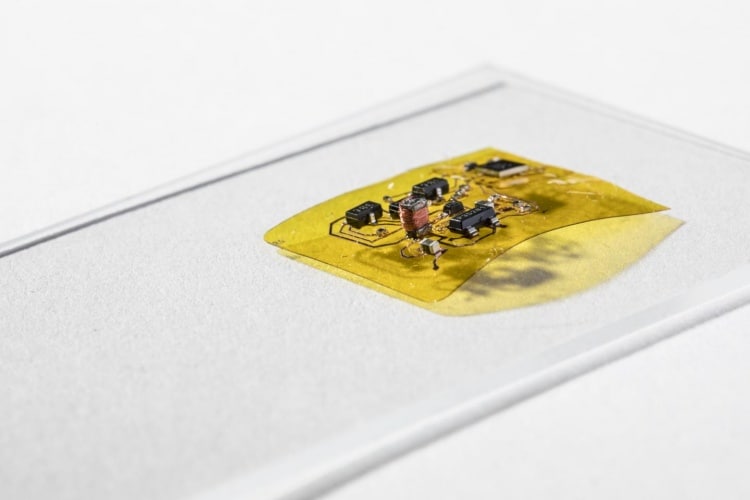
(Credit: Mark Stone/UW)
RoboFly has a tiny photovoltaic cell that coverts energy from a laser beam into electricity to power its flight. Until now, robotic insects such as Harvard’s RoboBee have been tethered to the ground in order to power their tiny bodies, which are too small to carry a requisite power source. But by directing a laser beam at the photovoltaic cell, the UW team was able to deliver enough power for wireless flight.
"Before now, the concept of wireless insect-sized flying robots was science fiction,” said study co-author Sawyer Fuller, an assistant professor in the UW Department of Mechanical Engineering who previously worked on RoboBee. “Would we ever be able to make them work without needing a wire? Our new wireless RoboFly shows they're much closer to real life.”
https://www.theengineer.co.uk/harvard-robobee-aquatic-aerial/
RoboFly works by flapping tiny wings, as rotors and propellers don’t function on this scale. The team designed a circuit that boosted the seven volts coming from the photovoltaic cell up to the 240 volts needed for take-off. A microcontroller on the same circuit allows gives the robot insect a degree of command over its movements, sending voltage in waves to mimic the fluttering of a real insect's wings.
"It uses pulses to shape the wave," said Johannes James, the lead author and a mechanical engineering doctoral student. "To make the wings flap forward swiftly, it sends a series of pulses in rapid succession and then slows the pulsing down as you get near the top of the wave. And then it does this in reverse to make the wings flap smoothly in the other direction."

(Credit: Mark Stone/UW)
For now, RoboFly’s abilities are limited to take-off and landing, as the mini-bot runs out of power once it moves away from the laser beam. The UW team is exploring ways to steer the laser to deliver continuous power, while future versions could potentially be powered by tiny batteries or harvest energy from background radio signals. Advanced models could also be equipped with better sensors and brains for specific tasks, according to Fuller.
"I'd really like to make one that finds methane leaks," he said. "You could buy a suitcase full of them, open it up, and they would fly around your building looking for plumes of gas coming out of leaky pipes. If these robots can make it easy to find leaks, they will be much more likely to be patched up, which will reduce greenhouse emissions. This is inspired by real flies, which are really good at flying around looking for smelly things. So we think this is a good application for our RoboFly."





Poll: Should the UK’s railways be renationalised?
I think that a network inclusive of the vehicles on it would make sense. However it remains to be seen if there is any plan for it to be for the...